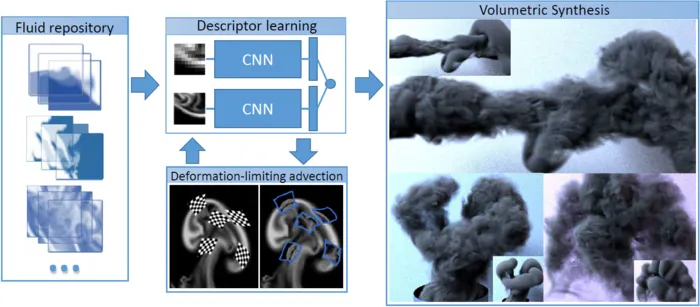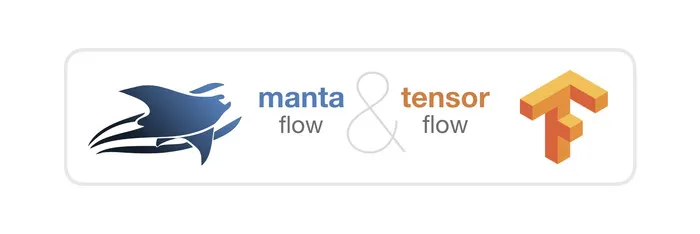Physics-based Deep Learning (Thuerey Group)

Deep learning algorithms for physical problems are a very active field of research. The group of Prof. Thuerey is very actively pursuing this area, which could be summarized as "physics-based deep learning". A particular focus lies on artificial neural networks for Navier-Stokes problems. You can find a summary here: physics-based deep learning research.
Deep Learning for Fluids
This section gives an overview of our recent publications on deep learning methods for solving various aspects of fluid problems modeled with the Navier-Stokes (NS) equations. These topics are a central theme of the research work in our group. Our publications have targeted different aspects of a typical simulation pipeline, and differ in terms of how deeply integrated they are into the NS solve. The following list is order from loose to tight couplings. E.g., the last entry completely replaces a regular NS solve.
- CNN-patches: We compute flow descriptors based on flow invariatns, which we use these to look up pre-computed patches of 4D data.
- ML-FLIP: This data-driven model captures sub-grid scale formation of droplets for liquid simulations.
- tempoGAN: Our GAN approach directly synthesizes a temporally coherent state of an advected quantity, such as smoke.
- Latent-space physics: This work focuses on pressure fields over time. In contrast to the others, it predicts the temporal evolution using the latent-space of a trained encoder network.
- Neural Liquid Drop: this method captures full solutions for classes of liquid problems in terms of space-time deformations, allowing for real-time interactions.
- Reynolds-averaged Navier-Stokes for airfoils with convolutional neural networks
- Generative neural networks for reduced parametrized fluid spaces

mantaflow & tensorflow
Many of our research projects are based on a common codebase, the mantaflow solver. This solver is an open-source framework targeted at fluid simulation research in Computer Graphics. It has a parallelized C++ solver core, a high-level python API for defining scenes and quickly adapting the solvers. It is tailored towards quickly prototyping and testing new algorithms. Recently, we’ve also added tools and plugins to interface with the tensorflow deep learning framework. The long term goal is to build a flexible platform for machine learning projects involving convolutional neural networks and fluid flow. Below, you can find an introduction to get started with manta & tensor-flow, and more detailed tutorials will follow soon.

ERC Starting Grant realFlow
This research is supported by Nils Thuerey's ERC Starting Grant “realFlow – Virtualization of Real Flows for Animation and Simulation” (StG-2015-637014).